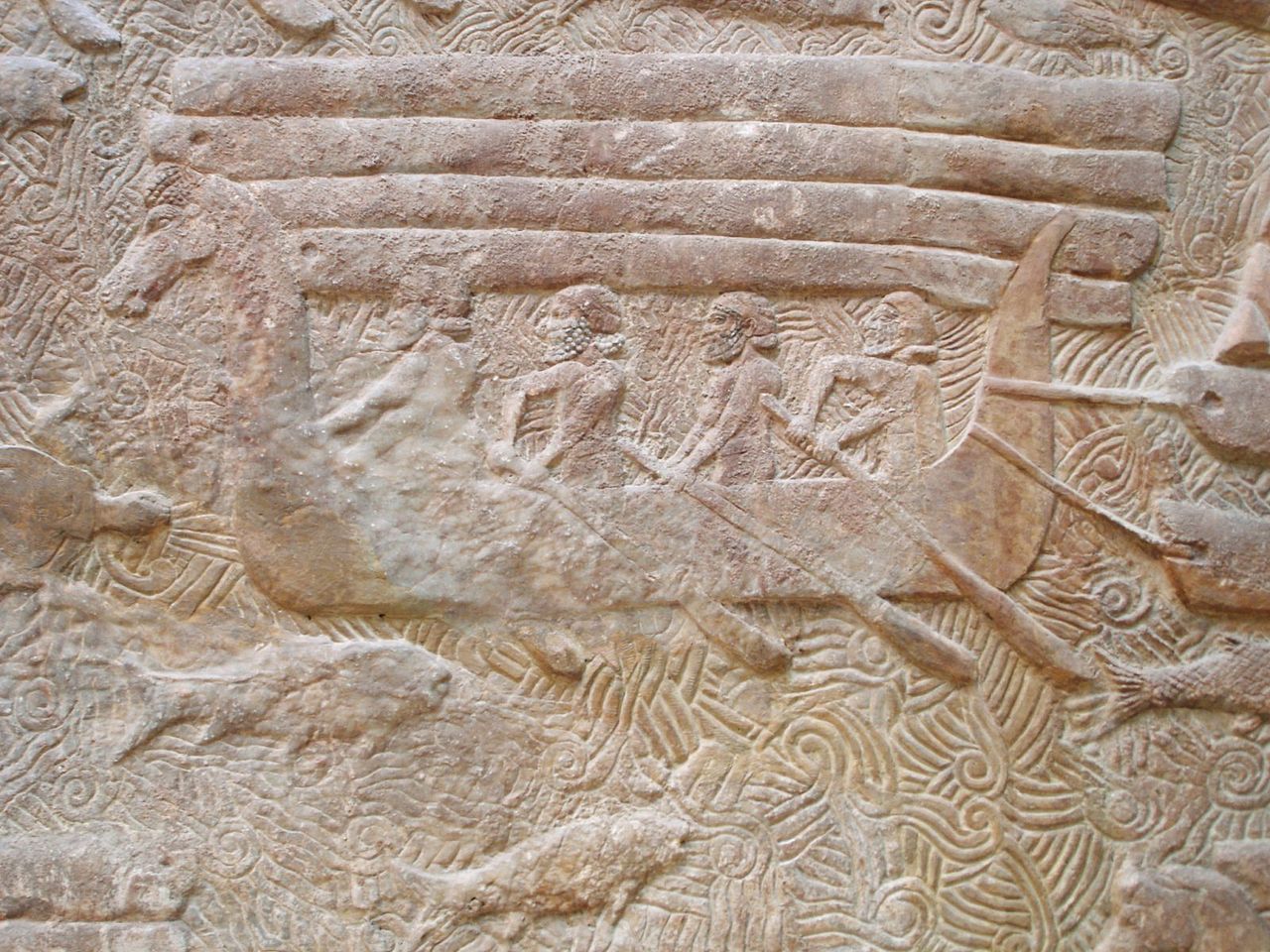
Preface
Reading about the origin of the various Roman ports it immediately becomes clear hat the vast majority of those ports were originally founded by the Phoenicians. As with sculptures, here too the Roman motto was: imitatio et aemulatio 1. The Romans adopted the infrastructure, ports and knowledge that had been acquired for years by the Phoenicians before the rise of Rome, who then expanded and improved. But who were those Phoenicians and what was their overseas trade? This article will tell us more about the trade and the important role of Sardinia.
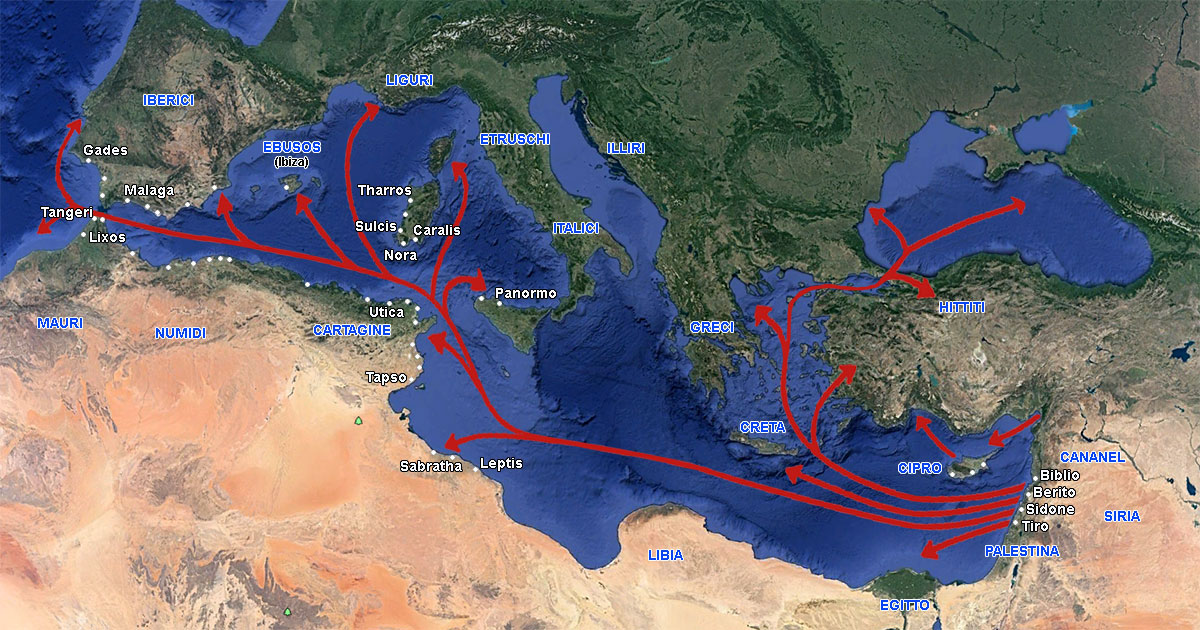
The Phoenician roots of the Sardinian ports 3, by Ahmed Fergiani
The homeland of the Phoenicians was the narrow strip of coast that more or less corresponds to modern-day Lebanon and a part of the coastal strip of Palestine and Syria. They themselves called their land Canaan. In order to make the country prosperous their focus was on the sea and they gradually built a thriving merchant fleet. As profits grew and technology advanced, they constructed larger ships that could handle longer voyages. The Phoenician captains knew every coastline, every wind and every ocean current and were able to navigate on the sun and the stars. One of the most bright stars (Polaris) was called the Phoenician star.
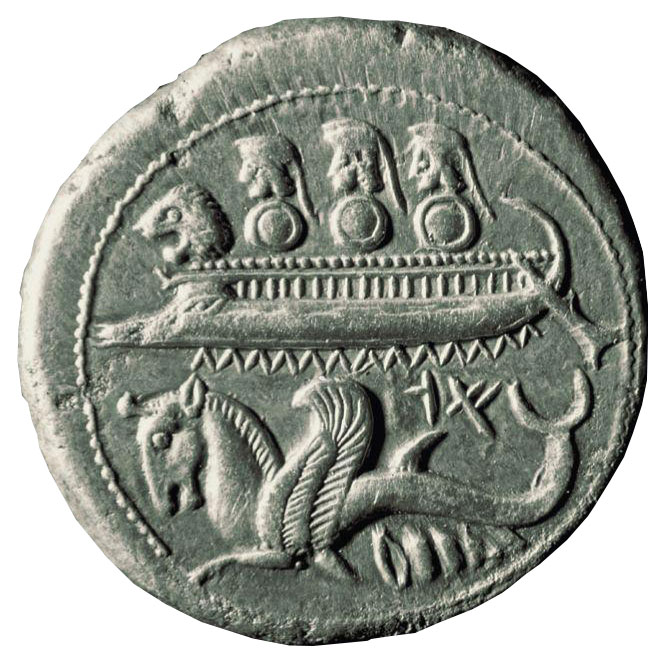
The sailing season was limited to the summer 4, not only due to the weather, but also because the crops needed to be attended to during the winter. In summertime vineyards and olive trees did not require a lot of attention. Therefore the summer was ideal for trading. The Phoenicians dropped their anchors in shallow waters like lagoons or hauled their ships onto the shore if there were beaches. That is the reason why many colonies and trading places were founded near lagoons or on peninsulas. There was always a safe place for their ships, even though disembarking meant wading knee-deep through the shallow waters with a heavy amphora filled with olive oil or wine on the shoulders.
Sardinia had a strategic location for the Phoenician sailors, and it possessed a large quantity of precious metals, especially silver. The silver mines were in full production during antiquity. There were also numerous mineral springs, and large quantities of salt were manufactured on the western and southern coasts by its indigenous Nuragic population.
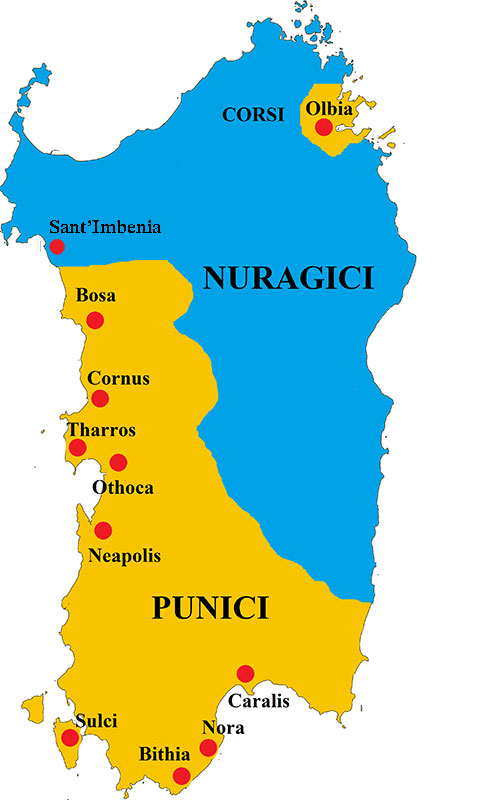
The yellow parts were colonized.
Around 1000 BC the Phoenicians landed for the first time on the shores of Sardinia and after that with increasing frequency. Setting sail from Lebanon, on their trade routes as far as Brittania (Great Britain), they needed safe anchorages for the night or to shelter for bad weather or a storm. The first settlement they built was Sulci (Sant'Antioco), followed before the end of the seventh century BC by Karalis (Cagliari), Nora, Bithia and Tharros. At Sant'Imbenia, a small commercial port in the north-west of Sardinia (Alghero Gulf), notable quantities of Phoenician pottery and amphorae were found. These settlements soon became important markets and after a while real towns, inhabited by Phoenician families who traded through the sea.
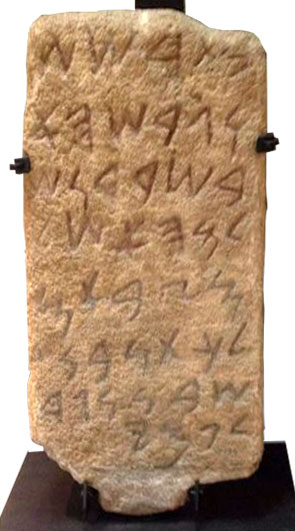
Nora, contains the oldest known
Phoenician inscription
The Phoenician traders invented an alphabet to document their trade agreements. The oldest evidence was found in the city of Nora at Sardinia. This same alphabet became the basis for the Greek and the Roman alphabet. Sardinia must have played a significant role in the development of the Phoenician commerce networks in the western Mediterranean, and therefore also in that of the later Roman ports. After the Romans defeated the strong Phoenician town of Carthage during the so-called Punic wars, they occupied Sardinia and made it a province of Rome.
Cicero referred to Sicily, Africa, and Sardinia as the three great granaries of the republic 5. Partly due to the rich agricultural production in Sardinia, Rome was allowed to survive. Ample grain supplies made it possible for many Roman emperors to provide the citizens of Rome with bread against affordable prices.
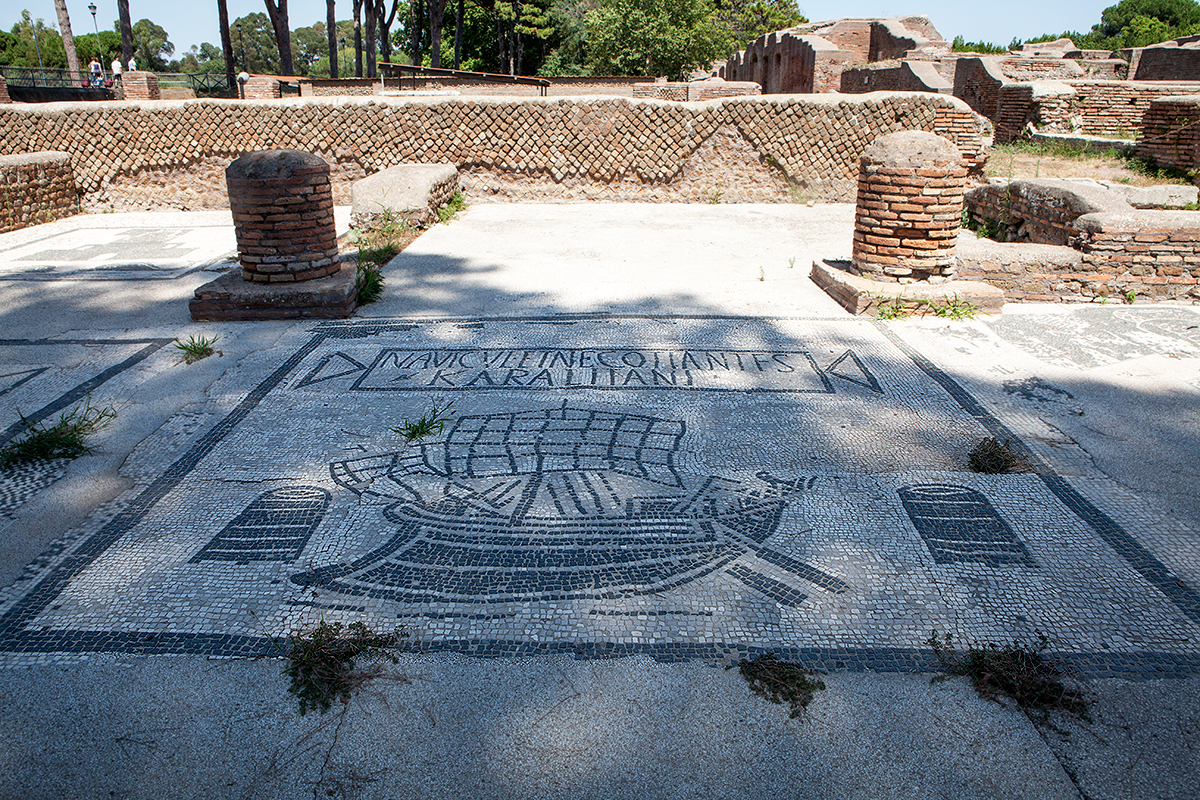
The role of Sardinia as grain supplier was continued during later centuries, as we can see in the harbour of Rome, Ostia. Here we find a mosaic with the text NAVICVL(ARII) ET NEGOTIANTES KARALITANI 6, which indicates the office of skippers and merchants of Cagliari. Another mosaic with the text NAVIC(VLARII) TVRRITANI 7 documents the presence of Sardinian skippers of Porto Torres. Today Sardinia is a 'sea of lost ships'. The discovery of the century was in Olbia, where a fleet of twelve cargo ships used to transport grain to Rome was found. Among the remains was an eight meters high Roman mast - a rare survival because the fleet was sunk 1500 years ago in an act of war.
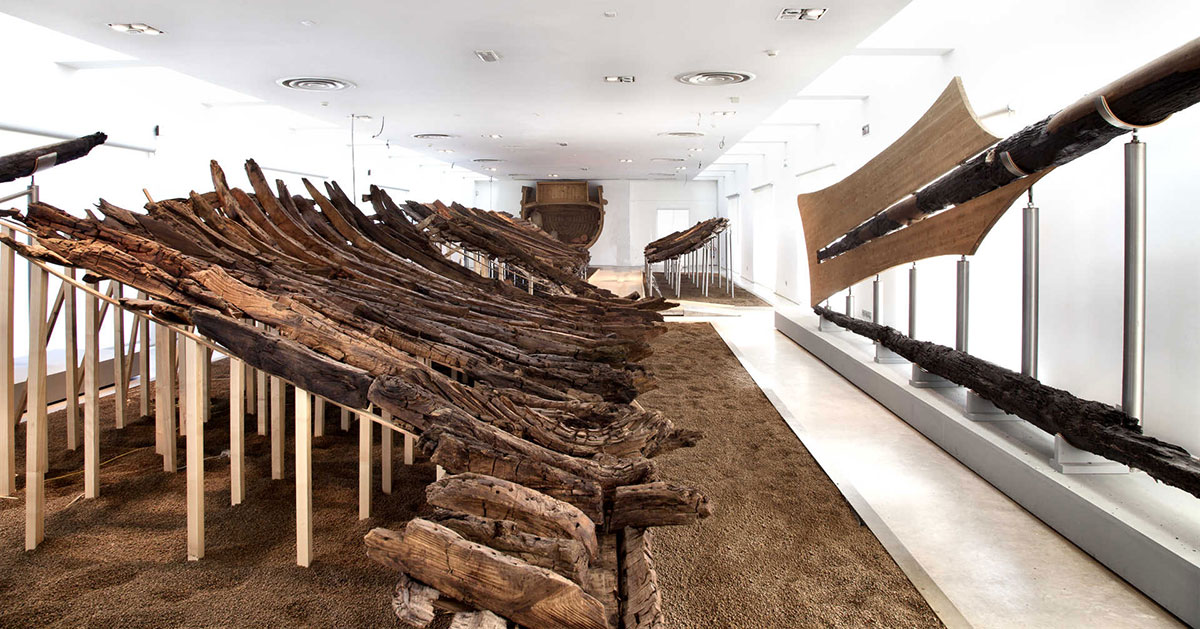
- Sources and notes
- 1: Imitatio et aemulatio - translation: "Imitation and improvement", like the Romans imitated Greek sculpture and improved.
- 2: Transport of Lebanese cedar wood to Mesopotamia (from the palace of Sargon II, end of the eighth century BC). Louvre, Paris.
- 3: For more about the Phoenician history you can read https://phoenicia.org/history.html.
- 4: Read also our article "Winter shipping".
- 5: Pro Lege Manilia.
- 6: Statio 21 on the Piazzale delle Corporazioni at Ostia.
- 7: Statio 19 on the Piazzale delle Corporazioni at Ostia.
- 8: Photo: Museo archeologico, sala interna. Credits: ASpexi.






 We are committed to providing versions of our articles and interviews in several languages, but our first language is English.
We are committed to providing versions of our articles and interviews in several languages, but our first language is English.